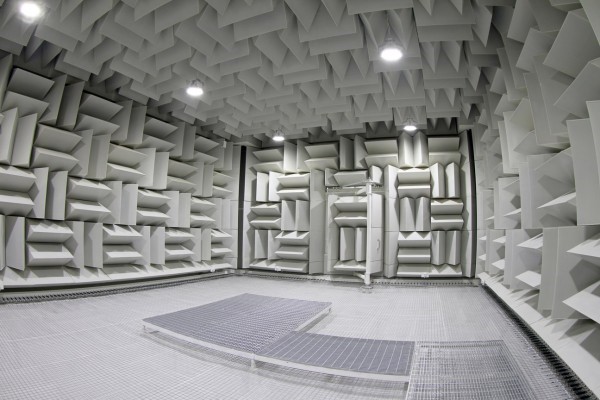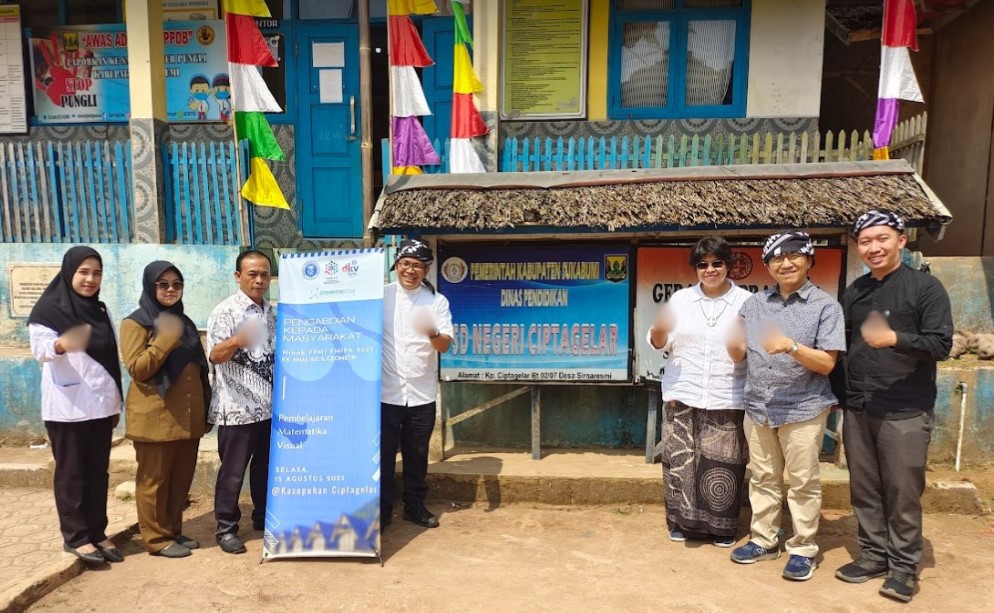Anechoic Chamber ITB: IndonesiaÂ’s First Echoless Room
By Fatimah Larassati
Editor Fatimah Larassati

The Beginning of Echo-minimal Acoustics Technology
Before the construction of the anechoic chamber, ITB has provided a similar acoustics facility under the care of Physics Engineering major. Semi-Anechoic chamber is located at the 3rd floor of 6th Technology Laboratory. However, this room was mainly built of porous materials covered with cloth instead of special structured materials like its successor and thus it has lower sound-proofing ability. Additionally, the floor of this room is also not covered with sound-absorbing materials and that allows for more echoes.
Increasing Acoustics Quality through Anechoic Chamber As its name implies, anechoic chamber is a room designed to absorb sound and electromagnetic waves. What differentiates this room from a normal room is the special layer covering its wall. Upon entering the anechoic chamber, layers of pyramidal sets pointing to the center of room can immediately be seen. These pyramids are the special sound-absorbing materials called wedges.
As its name implies, anechoic chamber is a room designed to absorb sound and electromagnetic waves. What differentiates this room from a normal room is the special layer covering its wall. Upon entering the anechoic chamber, layers of pyramidal sets pointing to the center of room can immediately be seen. These pyramids are the special sound-absorbing materials called wedges.
With this particular materials and structure design, anechoic chamber is able to dissipate unwanted waves coming from the inside or outside. The desired wave frequency range that can be isolated depends on the room volume and the size of the wedges. This means every room will have unique The anechoic chamber, which is a part of CAS Acoustics Laboratory, was built to replace the similar room located in the now defunct Physics Construction Laboratory "Adhiwiyogo".
Anechoic chamber was mainly designed to find out a material's acoustical characteristics. One of researches is currently being conducted by Rizkia (Physical Engineering 2012), who uses the room to figure out the suitable construction design to maximize Gelora Bung Karno's acoustical quality. The chamber would be open for anyone including other universities or even industries. "The room is usually used to study the acoustics quality of a material. The studies could be supervised by automotive companies to characterize the sound absorbance percentage of a material. The room was designed in a way that even the slightest breathing sound could be heard," Mr. Adib explained.
Anechoic Chamber Construction and Management
The room that would soon be completed with a finger-print access was manufactured by IAC Acoustics Australia, one of the leading acoustics companies. The construction process was complex, starting from designing the desired wedges, communicating the proposed design to the wedges designer at China, sending it back to ITB, and constructing the room itself for approximately 3.5 months. No wonder several universities that tried to start a similar project failed in the process. Once completed, anechoic chamber future users would be required to undergo training held by IAC Acoustics Australia technicians to ensure that they are fully prepared to use this room.
So far, the room has mostly been used by ITB Physical Engineering students to finish their final projects. "There was a doctorate student who used the semi-anechoic chamber to record a Javanese gamelan. We tried to measure its voice characteristics," Rizkia said. "Besides measuring sound characteristics, voice recognition and forensic tests can also be done in the room." With the availability of such research facility, it is expected that Indonesian acoustics technology will flourish. In the future, the anechoic chamber will be managed by the CAS unit, a unit of experts from various disciplines such as Biology, Pharmacy, Physical engineering, and so on.
Image source: fti.itb.ac.id
Florentin Anggraini P. (Physics 2014)
Agatha Victoria (Faculty of Industrial Engineering 2015)
ITB Journalist Apprentice 2016

.jpg)

.jpg)
.jpg)
.jpg)
